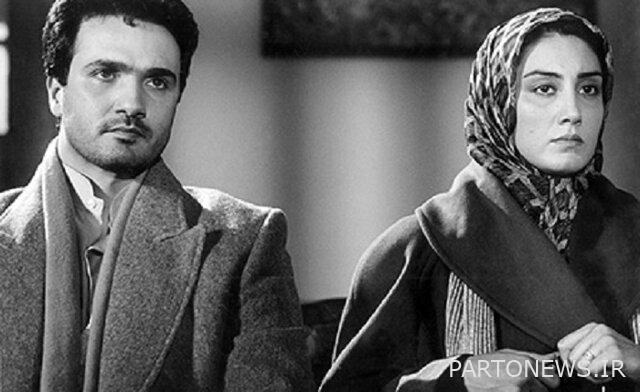“Red” and empty places of attractive cinematic seasonings

At a time when the discussion on the need to produce movies from various genres and the concern of cinema becoming a single genre has become a serious issue in Iranian cinema, a movie like “Red” which has been aired for some time on the home network, reminds us of the empty space of many attractive genres. It is cinema.
Charso Press: The movie “Red” which was made in 1377 and directed by Fereydoun Jirani, was not shown on the home television network until recently, and now, according to its producer (Gholamreza Mousavi), the right to broadcast it has been assigned for a few years.
The release of this film, which achieved significant sales in its time, was accompanied by mixed feedback, one part of which returned to the film and the other part to the filmmaker.
Fereydon Jirani had a press background before “Red” and since he entered the amateur cinema very early, he also started filmmaking and screenwriting, but he was on the verge of turning fifty when he made his second feature film and according to some, his first film. build his career so that he can find a name and official status in the cinema.
“Red”, which was emphasized to be a fictional account of a real story, from the point of view of some film critics, it used the elements of fear and horror well, and with the acting of Mohammad Reza Froutan and Hadih Tehrani, who were the stars of those days, it became a lasting movie in the memory. Many movie lovers became.
At the time of the release of this film, Ahmad Talebinejad conducted an interview with Fereydoun Jirani, which was published in issue 239 of the film magazine.
A part of this interview was dedicated to the issue of genre in Iranian cinema, because “Red” was known as one of the few crime films that had a believable theme and plot in Iran at that time. After a quarter of a century has passed since the making of this film, “genre” is still one of the important discussions of cinema, especially in the days when the production and release of comedy films has intensified and many filmmakers, in addition to criticizing the rule of comedy films over cinema, are concerned about the strictness to take They are also complaining about the license to make social films.
For this reason, a part of that interview is republished, in which Talebinejad raised the issue that “perhaps one of the reasons for the constant crises of Iranian cinema is not the lack of genre” and said: the meaning of genre is that we prepare the audience to act based on some Stereotypes and patterns enter the cinema hall. When we say western or crime genre or any other genre, it means a set of rules and instructions or different spaces and places, which the audience is already familiar with.
In this context, Jirani confirmed this comment and explained: But let’s not forget that after the revolution, a genre emerged in Iranian cinema, and that is the war genre. It should be investigated why we don’t have genre in other fields?
Pointing out that Samuel Khachikian’s films are included in the genre, he said: “Genre is a result of social and cultural conditions, that is, genre comes out of the heart of the conditions, and due to the social and political conditions that we had in the past few decades, it was not possible to diversify cultural themes because we were an undeveloped society where freedom in It is not institutionalized.”
Now that we are talking about “Red” and its official release after many years on the home theater network, apart from the genre, we should also mention some other special features of this movie, such as the music and the ballad “Aashq Man, Ashaghi Beyam” which covers several sequences. In the movie “Red”, he has distinguished: the party scene at the house of “Hesti Mashriqi” and “Nasser Malek” (played by Hedih Tehrani and Mohammad Reza Froutan) or the final sequence of the movie, which is associated with Nasser’s death.
Jirani said about musical nostalgia in his film: “When I was writing the script, I was thinking that an old song should be heard in the party scene. Then this idea became that the ballad can both express the mood of the main character and find a dramatic function as an element. I loved this ballad since I was a teenager. One day before filming, I played the tape for the group and everyone agreed except Babak Bayat who did not agree. Not that he did not accept the ballad, he wanted to make an original ballad. He even did this, but I insisted against his will, and finally he reluctantly agreed to use the same ballad.
This movie director has described the reason for choosing “Red” as the name of his film as follows:Khosrow Haritash, while writing the screenplay of “Fever”, said something that is very important to me. He said, the name should be very special. He meant the names of the characters and the name of the movie itself. He even said that the last letter of the last name of the characters should be varied. Whenever I write a screenplay, I struggle with names. Even when I write scripts for others, we argue for a while about people’s names. However, I did not choose the name of the film. Twenty names were suggested, including “Love Me” which was not a good name. One night, Gholamreza Mousavi suggested “Red” and I liked it too. “Red is low tide and I like low flood names.”
In “Red”, in addition to Fortun and Tehrani, who both won Simorgh Crystal for the best lead actors, Kamand Amir Soleimani, Turan Mehrzad, Saeed Pirdoost, Peyman Shariati and Shahreh Soltani have played.
///.

